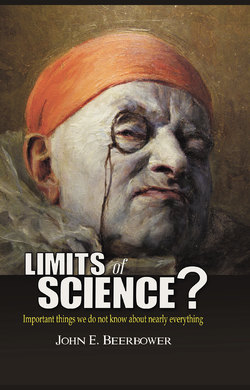Читать книгу Limits of Science? - John E. Beerbower - Страница 16
На сайте Литреса книга снята с продажи.
Bells, beer and ravens
ОглавлениеSuppose that over three years as an undergraduate, one observed that whenever the bells of St. John’s College chapel rang, the bells of Trinity College chapel rang almost immediately thereafter. Inductively, one might infer (correctly) that there was a relationship between the two events. However, one might also (incorrectly) infer that the ringing of the John’s bells “caused” the ringing of the Trinity bells. In fact, presumably, the cause of the regular occurrence was that both bells were set to chime on the hour but the Trinity clock was slightly slower than the John’s clock. The causal relationship is thereby described by a more complex and extended theory.
The example that I recall being used in my statistics class 45 years ago was the close negative correlation between infant mortality and beer consumption (or, perhaps, it was a positive correlation between life expectancy and beer consumption). The misleading inference that could be drawn was a result of the selection of the data used. It reflected experiences across several countries in different stages of economic development. What was apparently behind the results was that economic development caused increased per capita beer consumption and also caused greater life expectancies (or lower infant mortality). There was no causal relationship between the two variables that were being correlated, only correlations of each with something else. But, those other correlations may well have reflected causal relationships.
Finally, there are many examples of empirical observations that would satisfy the description of “successful predictions” that could not meaningfully be considered as confirmation of the theory. One example is the “raven problem.” The proposition that “all ravens are black” logically entails the proposition that “All non-black objects are not ravens.” Yet, the observation of an object of a color other than black that is not a raven (e.g., a white swan) can hardly be deemed inductive support for the initial proposition about ravens. See, e.g., Lipton, Inference to the Best Explanation, pp.14–6.
To the non-philosopher, these problems raised by these examples may seem rather contrived. It is tempting simply to say “I know valid inductive support when I see it” and, I think, one would fare quite adequately. But, the philosophers want to define precisely both how one would “know it” and how one would “see it.”
